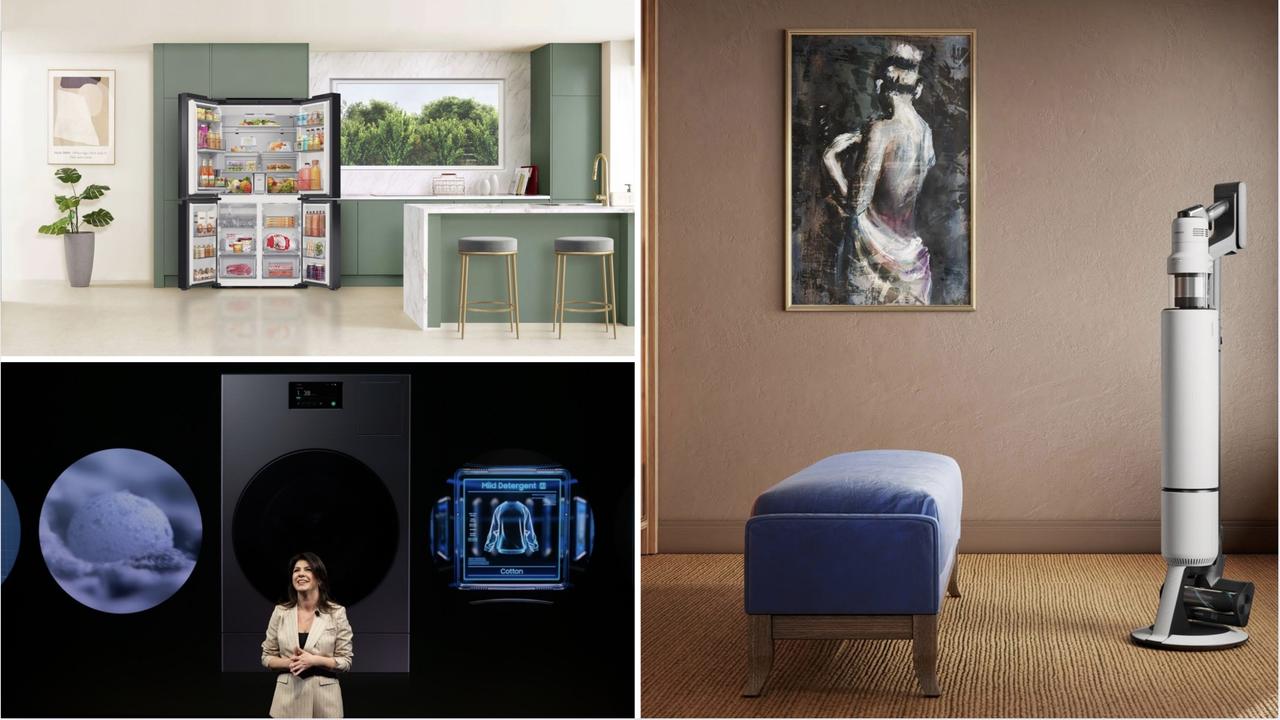Motorised skateboards glide into top spot on the Christmas list, but road rules might stop some
MOTORISED skateboards are shaping up as a hot item this Christmas but Aussie laws could stop you from taking them on the road.

Gadgets
Don't miss out on the headlines from Gadgets. Followed categories will be added to My News.
IT’S 2015 and there’s no sign of the hoverboard promised in Back to the Future II.
A device with a strong resemblance to it may be this year’s must-have Christmas item however, as self-balancing, motorised skateboards finally arrive in Australia.
Available from major electronics chains and Australian online stores, the skateboards keep riders upright like Segways, hit speeds of up to 12km/h, and let riders zip to and fro just by shifting their balance.
ON YOUR SKATES: Rocket Skates demonstrated at the Consumer Electronics Show
UNBALANCED: Katy Perry stacks it on her Segway
But rules for riding the vehicles differ from state to state, with penalties of up to $220 for their misuse, and their makers warn to avoid cheap international imports for safety reasons.
Motorised skateboards first appeared overseas about 10 months ago, with Justin Bieber, Kendall Jenner, Lily Allen, and Ne-Yo among their early celebrity fans.
But the Brisbane-based founder of board maker 3VOLV, Trent Fung, says the first models were not as responsive or stable as the current generation.

“They were sluggish when you turned them,” he says. “There was a delayed response.
“We wanted to juice it up a bit, and the latest models responds a lot faster, and they don’t shudder.”
Fung has already attracted attention for this 3VOLV ZoomR skateboards, which bear the simple slogan “Beats walking” and offer greater torque than competing products.
“They’re going to be the hot ticket item of Christmas 2016,” he says.
Melbourne-based firm Kaiser Baas will also sell its motorised skateboards in Australia this year, securing deals with retail chains JB Hi-Fi and Harvey Norman after its sales manager insisted on taking the company’s Revo Glider to meetings.
“Everyone went crazy for it,” chief executive officer Evan Kourambas says. “They formed a circle around him.
“I’ve had more people watching me (riding the board) than I had at my wedding.”
The attention-grabbing technology that lets riders appear to glide from place to place, and spin on the spot, is already proving so popular one Harvey Norman store sold out in a day.
The technology’s popularity also led Kourambas to rebrand Kaiser Baas as an action technology company with the slogan, “Challenge yourself”.

It will launch scooters and other Segway-style products in future, Kourambas says.
“It’s a category we’re calling ‘rideables’. We’ve looked at it pretty seriously and the battery-powered, personal mobility market looks like it’s going to be really big. It’s all being predicated by the battery technology that is coming out now.”
But there are challenges to these personal transport devices.
In addition to safety recommendations — 3VOLV recommends riders are aged 10 years and over, and Kaiser Baas recommends riders have a “spotter” — their lithium-ion batteries can be overcharged and should not be left connected to power overnight.
Kourambas says overseas models with untested, cheap or volatile batteries can be dangerous.
“If the motor fails, you won’t spin around for too long,” he says, “but if the battery fails, it might burn your house down.”
Australian riders should also be aware of the laws around “wheeled recreational devices” in their state.
New South Wales riders can take their skateboards on roads, footpaths and shared paths, giving way to pedestrians and bikes. Queenslanders can do the same, in many cases, but must wear an “approved bicycle helmet”.
In Victoria, South Australia, Western Australia and Tasmania, however, the laws restrict motorised skateboards to private property only.
A South Australia police media spokesperson describes the devices as motor vehicles that “cannot be registered under the Australian Design Rules and therefore cannot be used except on private property to which the public has no general access”.
The laws do not prevent Christmas shoppers from investing in the personal transportation gadgets for indoor and home use, however.
Riding the self-balancing boards is habit-forming, Kourambas says. After giving one to his 19-year-old son, “he no longer walks at home any more”.
Australian rules for riding motorised skateboards:
New South Wales:
— Can ride on roads but must keep left and cannot travel beside a pedestrian or car
— Can ride on footpaths and shared paths but must give way to pedestrians and bicycles, and must not ride on the pedestrian lane of shared paths that split in two
Queensland:
— Riders must wear an “approved bicycle helmet”
— Can ride on footpaths and shared paths but must keep left and give way to pedestrians and bicycles
— Can ride on roads except those with a median strip or centre line, one-way roads with more than one lane, and roads with a speed limit over 50km/h
— Must not ride at night, alongside a pedestrian or car, or cause a traffic hazard
Victoria, South Australia and Tasmania:
— Private property only
Western Australia:
— Private property, off-road areas, and “any local council land designated for their specific use”.
Originally published as Motorised skateboards glide into top spot on the Christmas list, but road rules might stop some



